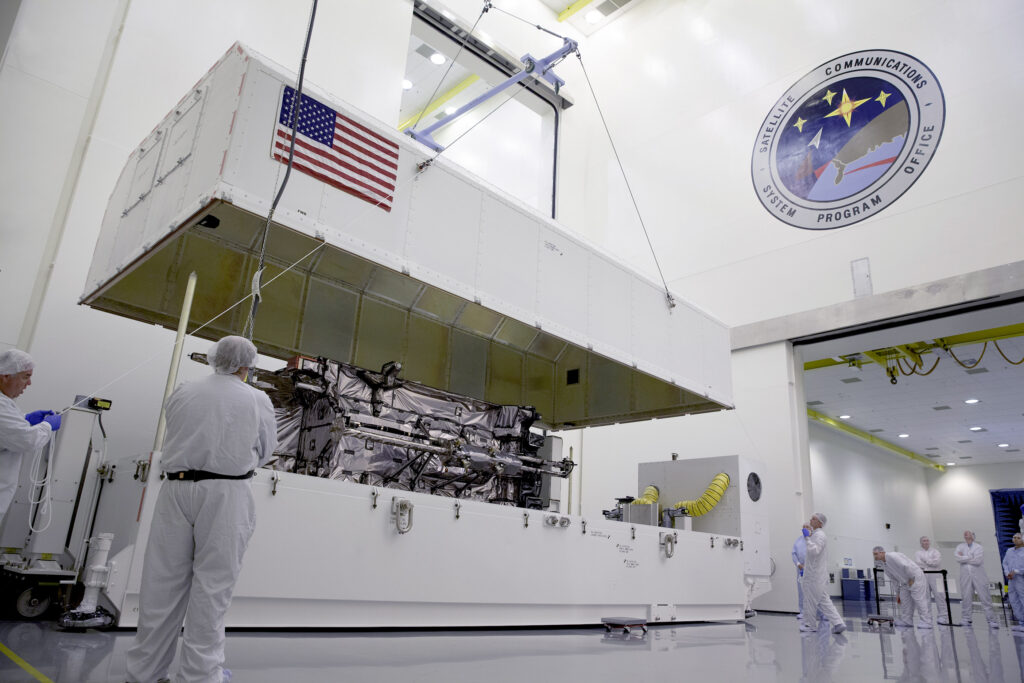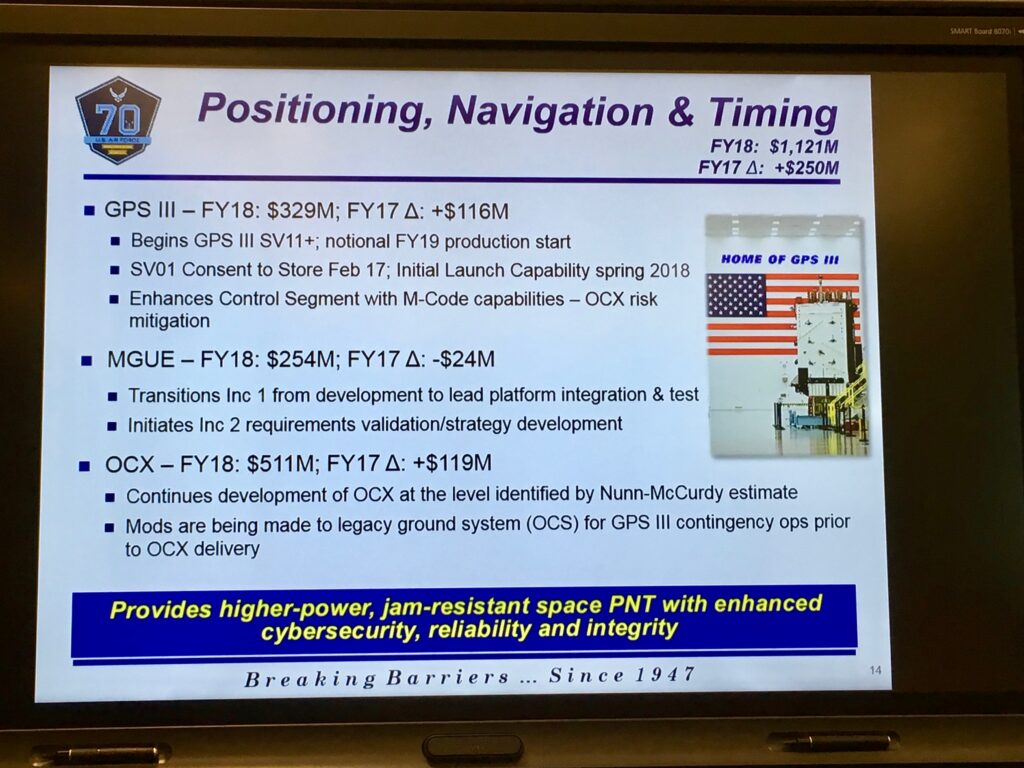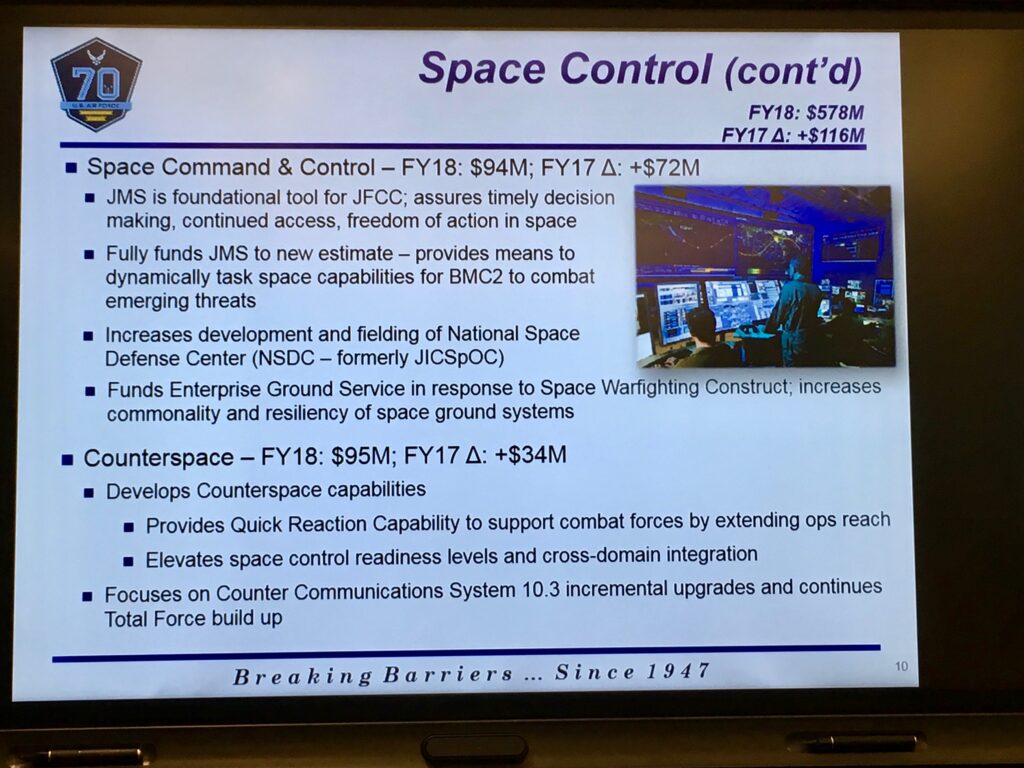Air Force Space Budget Up $1.5B; Teague ‘Cautiously Optimistic’ On OCX DAB Meet
Posted on

PENTAGON: The big news on the 2018 Air Force space budget: it grew at least $1.5 billion. That’s a large increase considering the total budget request is $10.4 billion. For perspective, the entire Defense Department space budget last year — known as the space Major Force Program — was $22 billion. The Air Force oversees the vast majority of the unclassified space budget, so much of that other spending can probably be attributed to the NRO, builder and operator of the nation’s spy satellites.
The most troubled space program, the OCX ground control system built by Raytheon, faces a Defense Acquisition Board meeting in late June where the decision will be made as to whether it will progress beyond Milestone B. The safe money says it will. Maj. Gen. Roger Teague told reporters on a briefing about the space budget today that he was “cautiously optimistic” about the results of the meeting but also noted that OCX was not out of the woods yet. The budget request reflects that optimism, boosting the request to $511 million, up $119 million from last year.
The Air Force and Pentagon really have little choice but to stick with OCX, in part because Raytheon appears to have fixed the really challenging cyber and physical security problems it encountered, and because the US military really needs those protections and the jam-resistance of the GPS III satellites which will feed their data to OCX. Switching horses now would set back those capabilities by years and cost even more. However, the head of Air Force Space Command, Gen. Jay Raymond, told Congress last Thursday that the Air Force has “programmatically built off-ramps to be able to go a different direction” if necessary. He conceded that the OCX “mission is too big to fail,” but pledged that “no program is too big to fail.” (Emphasis ours). The Air Force must keep the heat on Raytheon, thus the language.

Among the most strategically important spending in the space budget is that for counterspace and space control. In the past, military officials rarely discussed spending on these topics. Much of the budget is presumed to be classified. However, Deputy Defense Secretary Bob Work highlighted their importance two years ago in a speech at the annual Space Symposium:
“While we rely heavily on space capabilities, in both peace and war, we must continue to emphasize space control as challenges arise,” Work told a classified session in Colorado Springs. “To maintain our military dominance we must consider all space assets, both classified and unclassified, as part of a single constellation. And if an adversary tries to deny us the capability, we must be able to respond in an integrated, coordinated fashion.”

The United States tripled its sometimes controversial spending on offensive space control and “active defense” weaponry between 2013 and 2015. Two years ago, the Pentagon planned to spend “a majority” of a $150-plus million pool on them over the next five years, part of a broad and fast-moving shift in US space priorities. As you can see from today’s briefing chart above, space control spending should go up another $34 million to $95 million for 2018.
What is driving the US military’s boosted spending on these space weapons and the broader push for what the military and Intelligence Community call resilience? David Hardy, acting deputy undersecretary of the Air Force for Space, put it simply today: “Based upon our intelligence assessments, it’s clear both China and Russia have aggressive programs to both demonstrate and produce eventual operational capability to be able to both non-kinetically and kinetically attack our space assets across the spectrum.”
Subscribe to our newsletter
Promotions, new products and sales. Directly to your inbox.
